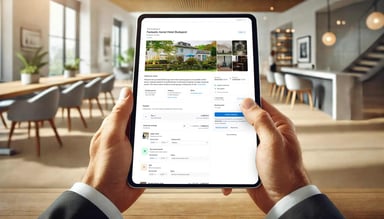
MeetingPackage
Basically, meetings are a social affair of at least two people to achieve what one individual can't. Meetings are essential to facilitate individual endeavors, work together on joint ventures, accumulate support for ideas, trade thoughts, tackle any issues together, and settle on agreement based choices.
In the present day fast-paced, coordinated business environment, hosting a gathering can be very testing. Straightforward tasks, for example, managing the event time, booking the correct room size, having the vital gear and overseeing correspondence are only a portion of the major disappointments that brands experience.
Here are some incredible tips to assist you with hosting a productive business meeting all the way so you can effectively flaunt your power and demonstrable skill in the business world.
Let People Know Why You are Hosting the Meeting
Without realizing it, you might schedule a meeting without even considering any other options. You may think of it as the easiest way to get something done. However, the truth is that some things can be done much more effectively in other ways.
Before you decide to schedule a meeting with your associates, think about how much time it takes to gather everyone and discuss a problem. Then, think about how much energy each one of you will spend on analyzing the situation. Also, consider how much time you will need to implement the solutions. As you are well aware, time is money in a business and it should not be wasted easily.
That is why you need to think about other ways to communicate with your co-workers before you decide to summon them for a business meeting. Sometimes, one email to the right person is all it takes to resolve the problem. Other times, you might explain everything in a phone call and assign responsibilities quickly.
Who are those that needs to attend?
As strange as this sounds, not everyone who attends a meeting needs to be there. All too often, meetings are canceled, moved or never get arranged because people who don't have to be in attendance want to be there, causing delays and frustration all round.
So, when arranging your meeting, decide who the key stakeholders are, who are the required attendees, and those who are optional. To help support your optional people feel more comfortable about not having to be present, make sure that you have comprehensive meeting notes and minutes so that updates can be provided after the event.
State all of your expectations beforehand
When you first send out notification of the meeting, be clear about its purpose and your expectations. Will the meeting revolve around a presentation? Will the attendant need to take notes? Or is this a brainstorming session everyone is expected to show up with ideas and suggestions?
In some corporate cultures, employees don't need to participate — they only listen and head back to their workspaces. In other companies, employees participate freely. In today’s collaborative workplaces, interacting, and sharing ideas is not only welcome; it's frequently the purpose of the entire meeting.
When you're setting out your expectations, it's also an excellent time to send out any required reading or material you'll want those attending to look over. That way they're prepared when they get to the meeting and there are no surprises.
Set Up a Meeting Plan
Always set a meeting schedule and distribute proper timings to talk about each subject matter. Try to stick to the fixed plan to avoid meeting delays. Remember to begin and stop on time. The worst case is when the meeting starts at the decided time but does not end at the specified time.
Do not wait for the latecomers as it is undoubtedly unfair to punish those who arrive on time for the meetings. Latecomers must not be allowed to enter inside if arriving late. This strictness is a must to discipline such employees.
Time the meeting
There are lots of factors affecting when people can turn up to meetings - and how awake and relaxed they will be when they get there!
If you are holding a public meeting, make sure you give lots of advance notice so that people can plan to be there if they are keen. Publicize an end time as well as a start time - and consider keeping the meeting short so more people can fit it in.
In an established group, it is easier to ask people about what timings would work for them. If you are deciding about your next meeting time face to face, make sure you also consult people who aren't present. Consider whether to choose a regular time (e.g., the first Tuesday of every month) - this makes it easier to remember meetings, but you will lose anyone who can never make that day.
Don't Stop Preparing
The more you take care of ahead of the meeting, the smoother it is likely to go. In particular:
- Distribute needed materials in advance and have extra copies at the meeting.
- If you are making a presentation, prepare your talking points and visual aids, and practice your presentation.
- Make sure you or an assistant is well-versed in any technology being used. Too many meetings are sabotaged by a lack of familiarity with conference calling systems or visual presentation equipment.
- Prepare the room in advance with attention to detail. Do you need markers, pads, or sticky notes? Perhaps participants expect water or snacks.
- If you need meeting minutes, assign this task to a reliable note taker.
A successful business meeting usually takes a fair amount of preparation and planning, but the effort involved is well worth it if it means getting started on time and conducting a fruitful meeting that benefits your organization, rather than one that leaves participants silently wishing they were anyplace else.
Why Not Start on Schedule
Starting on time is essential, both from a logistic and productivity standpoint. If you are the person who typically shows up for meetings on time, then you understand how frustrating it can be when things don't get going as folks trickle into the room.
What inevitably happens is, going forward, everyone knows that these meetings never start on time, so everyone starts showing up late. Take charge of your session. Start promptly at the given start time. Shut the door and begin. Stragglers will quickly get the message they are arriving late and they should only make that mistake once. And besides, everyone has to get back to work, so you don't want to disrupt the entire workday.
Listen, Speak and Listen
Even though you may be a team leader, you are not the most crucial person in the business meeting. Each team member is equally important. That is why you must make sure everyone understands their role and give them enough time to prepare. Do not speak just to be heard - this means you should try to convey simple and clear messages that everyone in the room can understand. This is especially important when you work with a multicultural team.
Keep your sentences short and precise, and ask for feedback to make sure your message is clear. Each member of the team should be given an equal opportunity to speak. Therefore, you need a schedule before the meeting. You can make it a part of the agenda or a separate document. The mediator also plays a significant role here, as he or she coordinates the meeting and notifies everyone about the remaining time.
After a meeting, arrange a follow-up after some time has passed. This is to make sure that everyone understands the tasks given to them - this is also to see how much progress they have made since the meeting.
Take Notes and Publish
It must be concise and especially mention what must arrange (paragraph “For action” with the name of the responsible and the schedule to make the information). If necessary, you can maintain a project management document (see this article on project management).
If there are any remarks or caveats, mention them with the person’s name so that their questions are well noted and taken into account. If your report is lengthy, make a summary at the beginning that only shows the outline, or use an incremental release if it is a project meeting.
Ideally, it is necessary:
- One person who takes notes (and who knows how to type quickly on the computer)
- One person who animates the meeting
Appreciate people
Lastly, thank people for arriving at the beginning and end of the session - this will give you the power to show them you care about them and their lives and that you appreciate them coming. You’d be surprised how much those around you are going to enjoy you thanking them. It will go a long way, too, to making the meeting a positive experience for everyone.
The truth of the matter is that no one wants to go to a meeting in our world of email and PDF documents. To make it worth everyone’s while to be there, follow these tips to help you make the conference successful and remember that you have the power with these tips to make everything effective and professional from the start of the planning the meeting, to the end of it when everyone is free to go back to their regular jobs.
Read also these blog posts:




